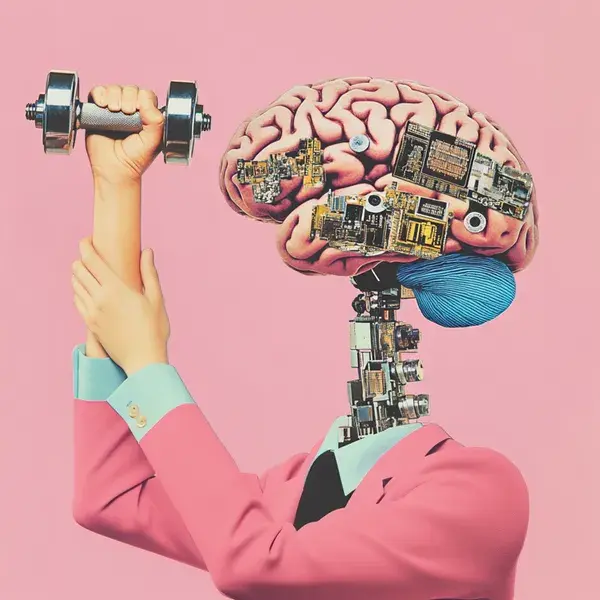Insights
Our CEO's 2025 Predictions: How AI Will Transform IP Law
Julie MacDonell
Feb 4, 2025

Imagine a world where protecting your brand and business doesn't depend on deep pockets, but on the strength of your vision. That's the future I see for intellectual property law—and it's why I founded Haloo.
After nearly two decades in trademark law, I've watched AI emerge as a transformative force, democratizing access in unprecedented ways. Just as personal computers revolutionized access to technology, AI is breaking down the long-standing barriers that keep countless businesses from protecting their brands. As trademark lawyers, we've seen how every business—from mom and pop shops to startups to multinational corporations—benefits from trademark protection. Yet too few actually secure it. We've watched clients, especially small businesses, lose their brands and sometimes their entire businesses to costly disputes that a simple trademark registration could have prevented.
As we navigate this new era of innovation, we have a responsibility to ensure that no business goes unprotected. Because when everyone has a fair chance to safeguard their brand, the entire economy thrives. That’s why our mission at Haloo is to harness AI's potential to build a fairer system that welcomes the hundreds of millions of entrepreneurs who've been priced out of the legal market. .
But this is just the beginning. As we look ahead to 2025, AI is opening up transformative new possibilities for trademark practice.
Predictions for 2025: Possibilities and Best Use Cases
Here’s where I see the future of IP law heading, with specific applications and best use cases for AI:
AI Will Automate Routine IP Tasks Trademark searches, patent prior art analysis, and copyright infringement detection will be faster and more accurate. AI can sift through global databases in minutes, identifying potential conflicts not just in names but in logos and designs, across international markets.
Lawyers Will Focus on Strategy With AI handling administrative tasks, lawyers will transition into strategic advisors, focusing on proactive infringement monitoring, branding strategies, and portfolio management. This shift allows for deeper client relationships and more valuable counsel.
IP Protection Becomes Accessible to Small Businesses AI will lower the barriers for startups and small businesses to protect their innovations affordably. From trademark registration to infringement monitoring and dispute prediction, AI will make sophisticated IP services available at a fraction of the cost.
A Vast, Untapped Market
There are over 400 million small and medium-sized businesses (SMBs) worldwide, and 80% of them lack access to legal help. This means that lawyers are currently serving only a small fraction of the addressable market for trademark services. Many lawyers worry that AI will lead to lost clients, but the opposite is true.
The majority of IP applicants file pro se (without legal representation), navigating complex systems on their own. AI will act as a bridge—connecting these self-filers and those who don't file at all to lawyers who embrace AI and the barriers it removes. By improving access and affordability, AI will expand the client base for legal professionals, not shrink it. Lawyers who leverage AI will find themselves serving a broader, more diverse range of clients than ever before.
How AI Will Reshape Trademark Practice
Beyond automation, AI opens new frontiers in trademark law. Here are some of the most exciting applications on the horizon:
Virtual Consumer Experience Simulations Generative AI will create virtual environments where new trademarks and logos can be "tested" in simulated consumer settings. From digital storefronts to augmented and virtual reality platforms, these simulations will help predict consumer perception and potential confusion with existing marks.
Enhanced Legal Reasoning and Analysis Large Language Models (LLMs) capable of step-by-step reasoning will dissect complex trademark disputes, parse prior case law, and draft preliminary legal opinions. These tools will provide structured frameworks for attorneys to build stronger, more comprehensive arguments.
Automated Trademark Research and Monitoring Inspired by AI in scientific discovery, these tools will analyze vast databases of trademarks, case law, and usage patterns, identifying subtle conflicts that might be missed in manual reviews. Real-time monitoring will alert legal teams to potential infringements almost instantly.
Streamlined Documentation and Drafting Generative AI will draft trademark applications, office actions, and legal briefs, ensuring consistency and compliance with evolving regulations. This will reduce errors and speed up filing processes.
Litigation Strategy and Predictive Analytics AI-driven simulations will model litigation scenarios, testing legal arguments and predicting outcomes based on historical data. This will help attorneys craft more effective strategies and advise clients on the best course of action.
Visual Identity and Brand Design Generative AI will assist in creating unique brand elements and logos, integrated with trademark search algorithms to ensure legal clearance. This will prevent costly rebranding and reduce the risk of litigation.
Navigating Challenges
While the opportunities are vast, we must approach AI integration responsibly. Key challenges include:
Ethical Standards: Human oversight remains essential, especially for decisions like infringement analysis and litigation strategy. AI can flag potential issues, but the lawyer makes the final call.
Data Security: Protecting sensitive client information is non-negotiable. AI tools must comply with strict privacy standards.
Upskilling Legal Professionals: Lawyers will need to develop skills in technology, data analysis, and AI management to stay competitive.
The Bright Future of IP Law
AI isn’t eliminating jobs; it’s transforming them. By automating routine tasks, AI frees lawyers to focus on creative problem-solving, strategic thinking, and client engagement. Here’s what this transformation looks like:
Increased Productivity: AI will free up several hours per week for IP professionals, creating new billable opportunities.
Streamlined Workflows: From portfolio management to infringement monitoring, AI will enhance efficiency.
Personalized Client Strategies: AI will analyze client data to deliver customized IP protection plans.
Advanced Visual Search: AI will identify conflicts in logos and designs with unprecedented accuracy.
Having spent twenty years watching the field evolve, I’m more excited than ever for where it’s headed. By working together—attorneys, entrepreneurs, and the technology we develop—we can secure a bright and equitable future for intellectual property protection. And that, I believe, is a revolution worth championing.













